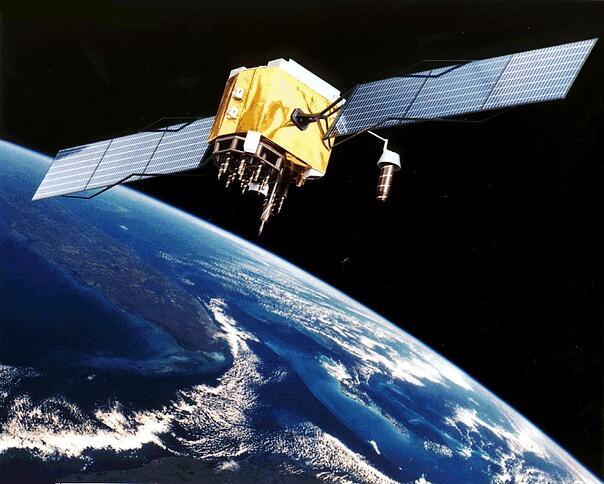Landing on a Comet and 10 Years of Technology

The news recently has been full of the amazing achievement by the European Space Agency in the landing of the first ever robot probe Philae onto a comet from the transport satellite Rosetta.
To be able to land a probe onto the surface of a comet is an amazing feat of human engineering but some of the numbers and stats that have come with the project are mind blowing.
Facts- Has travelled 6.4 billion kilometres to reach the comet.
- Has been travelling for 10 years after launching March 2004.
- The comet is the same size as Mount Fuji in Japan.
- Rosetta made three flybys of Earth and one of Mars in order to gain enough speed to get past Jupiter and on its way to meet up with the comet.
(facts from www.space.com)
One of the facts really stood out for me. The satellite Rosetta has been traveling for ten years in space just to reach the comet. That got my mind thinking, what has changed in those ten years?
The world has changed so much in the past 10 years. The rapid development of new technology and the changing landscape of the online world has changed the way we work and socialise at home.
Internet Everywhere
Broadband Internet was not widely available to all business and was often quite restricted by Internet service providers. After a couple of years, however, broadband technology rapidly began to replace dial-up connections and leased lines in the home and office. In the UK, prices began to drop dramatically when Telewest and NTL (both now part of Virgin Media) began offering very affordable broadband connections over the same cables used for cable TV. Shortly after this, BT began allowing competing ISPs to install their own systems in BT’s exchanges, and prices dropped even more. Every office and home is now cable or connecting to the Internet via superfast broadband and able to download information at incredible speeds.
The Rise of Blogging
Some of you may remember the time when everybody who had a modem and an Internet connection also had a website devoted to themselves and their opinion, on a free hosting site such as Geocities. Over time these free websites gave way to the phenomenon known as “blogging”. The more people posted their opinions, musings, diaries, art and photography, the more Web applications appeared to support this new brand of social journalism. WordPress was one of the most popular of these platforms, and it was even used by major news outlets as a platform for publishing blogs and news. Blogging is now as important to the culture of the Internet. Businesses around the world know the importance of blogging to speak to leads and customers who want more and more information and want to find this information on their own terms.
To find out more about the importance of blogging for a business read: WhatTo Blog About 11 Blog Post Ideas For Small Businesses
Sharing Media
There are generally three ways of transferring information between users: either over a network, using a cloud based database or on some sort of physical, portable media such as a mini hard drive. Ten years ago, CDs and floppy disks were the most readily available types of removable media, and the fastest corporate LANs (or local area networks) operated at between 10 and 100 megabits per second. Transferring very large files over the Internet was something only done by those with expensive, high-speed Internet connections. Things have changed massively in ten years.
Writeable DVDs became just as cheap as CDs, floppy disks have become extinct and everybody has a large-capacity USB drive. Very small, portable hard disks are now accessible to us all and can store the same amount of data, if not more, than a decade-old file server which would have cost a small fortune. Network speeds have had the same massive boosts and now operate at speeds of up to 2,000 megabits per second. The average Internet connection in the UK is now around 10 megabits a second, which makes it more than possible for people to share files averaging in the tens of gigs over a standard Internet connection.
The Demise of Regular TV
Over the last ten years TV has also gone through some serious changes. First, the birth of TV on demand: cable and satellite TV networks now offer an wide range of programs that you can watch at the click of a button without waiting for a rerun. Services like YouTube, Vimeo and Dailymotion have made it possible for everyone to have 15 minutes of fame, and more recently services like iPlayer, 4OD, ITV player and 5 on demand make TV accessible on all devices including mobile phones.
From Desktop Apps to Web Apps
One major change this decade has come in the way we use applications. Ten years ago, most database-type apps had an interface application which was installed on your desktop and connected to a central database server. These days, popular databases and contact management applications are all served to you from Web servers and run from within your browser. This has allowed people more flexibility in the way they work, because they can access these important applications from anywhere. The range of Web apps now available is incredible, from webmail and contact management to word processing and case management. Much of this software is also available for free for limited versions.
Apple Now the Must Have Tech
In 1999 Apple was struggling to turn a profit and find mainstream acceptance. Its user group was mostly a section of specialist graphics workers who favoured Apple hardware because of its ease of use in the world of media. All that changed this decade as Apple worked hard to provide not only easy-to-use computers but also hardware that looks good and appeals to those who see technology as a fashion accessory. The company’s most notable successes in recent years have been the iPad and iPhone, two stylish multimedia devices that everybody seems to want and use. Apple’s design chic has pushed up its profit margins and has given the company a rapidly expanding market share.
From Mobile Phone to Mini Computer
Mobile phones have evolved rapidly from clunky bricks with bad and simplistic LCD screens and ’70s sci-fi bleeps to high-powered multimedia computers that fit in your pocket. Gone are the days of a phone that only makes phone calls; these days most mobiles are capable of high-speed Internet connections, taking decent photos and videos, playing back movies and music, and with the thousands of apps available In the different operating systems stores. Apps have grown and grown over the past 5 years with more and more apps developed each day. We have apps that now help us with online banking, tell us how many steps we have walked in a day, where to go eat at the best local restaurants and not to mention the thousands of mobile games.
Social Networks
It would be wrong to describe the last ten years of technology increase without mentioning social media. The last 10 years have seen the upsurge of social media. This phenomenon takes elements of the old blogging sites, discussion forums and sophisticated profiling elements of dating sites, mashes them together and produces a place where people can advertise their social lives, reconnect with friends and organise events. Social networking has rapidly become an undeniable part of everyday life, and you will be hard pressed to find someone who doesn’t have a Facebook account.
Conclusion
Landing a space probe has been an incredible achievement for technology and the human race. But we have also achieved a huge amount in technology here on our planet in those ten years since the satellite left earth in March 2004. Ten years from now who knows what technology we will be using in business and at home.
Article by Dale Bonser


